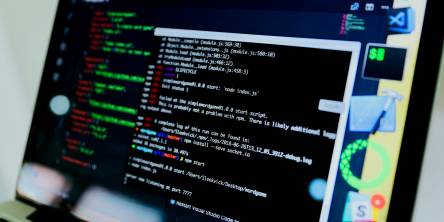Best Hospitals Asset Tracking Techniques in 2023
Running a hospital is decidedly among the most complex endeavors on Earth. And among the many, many tasks that make hospitals notoriously difficult to operate and run efficiently and successfully is asset tracking. But wait, what exactly is asset tracking, especially for a hospital? Simply put, it is the process of monitoring the location and status of physical assets. This can be done using a variety of technologies and techniques, but before we get to that, let us take a minute to talk about asset tracking in the context of hospitals.
You would agree that in a fast-paced and dynamic environment like a hospital, efficient asset tracking is crucial to ensure the smooth functioning of operations and the delivery of quality patient care. Hospitals rely on a wide range of assets that need to be accurately monitored, located, and maintained, from medical equipment and devices to supplies and medications. As you might be aware, hospitals are brimming with assets — from medical carts to medications and MRI machines — and even losing track of these assets can have severe consequences.
This is where asset tracking comes in, i.e., it is important for hospitals because it can help such facilities save time and costs, improve operational efficiency, and deliver better patient care. However, managing these assets can be a daunting task without robust tracking techniques in place.
With this blog, I'll explore the best asset-tracking techniques hospitals can implement to optimize resource utilization, streamline workflows, and enhance patient outcomes. Whether it's reducing equipment downtime, improving inventory management, or enhancing staff productivity, effective asset tracking can significantly impact a healthcare facility's overall efficiency and effectiveness.
Some of the most Important Asset-Tracking Techniques for Hospitals:
- Radio Frequency Identification (RFID): RFID uses radio waves to identify and track assets equipped with RFID tags. So, in hospitals, RFID technology is increasingly used for asset tracking. You see, RFID tags can be attached to equipment, hospital badges, and medication carts to help the administration monitor their location and movement. Hospitals can benefit from RFID by quickly locating assets, improving inventory management, enhancing workflow efficiency, and reducing equipment loss. Another reason why RFID is a popular asset-tracking technique in hospitals is because it is very accurate and can be used to track objects in real-time.
- Barcodes: Another popular asset tracking technique is a series of black and white bars representing data. Barcode readers are then used to scan barcodes and read the data. Hospitals can use barcode labels on assets and scan the barcodes with handheld scanners or mobile devices, thus enabling quick and easy asset tracking. Barcoding systems are also cost-effective asset-tracking solutions for hospitals, allowing them to streamline workflow processes, manage inventory effectively, and so much more.
- Bluetooth Low Energy (BLE) beacons are tiny devices that transmit signals using Bluetooth technology and can be easily placed across a hospital to help with asset tracking. It must be noted that BLE beacons are especially useful in indoor environments where GPS signals may be limited. Though they are a relatively new asset-tracking technology, a growing number of hospitals are now attaching BLE beacons to wheelchairs, equipment, and other assets to not only track their movement but also to help improve asset visibility.
- Internet of Things (IoT): IoT, i.e., a network of objects connected to the internet with the ability to gather and exchange data, has also played a key role in asset tracking. Speaking specifically in the context of hospitals, though, IoT can be used for asset tracking by integrating RFID tags, beacons, and sensors with a centralized system to deliver real-time information about assets' usage, current status, current location, etc.
As the discussion above demonstrates, a hospital asset tracking system can provide a few benefits for hospitals, such as better operational efficiency, cost savings, and patient care. With the right techniques, an asset tracking system can be the backbone of any hospital's successful operations.
Similar Articles
Finding affordable tools and software to assist with various tasks is a common theme in today's world. One such task that can often come at a high cost is deed plotting. Deed plotting involves mapping out property boundaries and measurements
Managing volunteers is crucial for any organization or nonprofit. Volunteer managers have long used tools to simplify their tasks and improve efficiency. From spreadsheets to email threads, these tools have been instrumental in handling volunteer recruitment, scheduling, and communication.
In today's data-driven world, businesses constantly seek ways to leverage their data for strategic insights and competitive advantage. Enter Microsoft Power BI, a leading business analytics solution that transforms raw data into compelling visualizations and reports.
Efficiency plays a crucial role in agricultural practices for managing crops and livestock. Farmers, ranchers, and agribusiness professionals worldwide are actively looking for ways to streamline their operations while boosting productivity.
Artificial intelligence is a powerful technology, fundamentally transforming the practice of medicine and how medical care is delivered.
Rapid, dependable, and scalable software solutions are needed more than ever in today's fast-paced digital world. Companies must quickly offer high-quality apps with seamless user experiences. DevOps helps here. A mix of "development" and "operations," DevOps methods strive to bridge software development and IT operations
The global market now firmly acknowledges that software has become integral to almost every facet of our lives, especially considering the technology-driven world in which we now live. No matter if they are the social media apps we use to stay connected to friends and family or the sophisticated systems that drive business operations -- we lean on different software every single day
In today’s software development and increasingly agile environments, continuous integration (CI) has proved to be a critical best practice that comprehensively applies to QA testing. Continual integration helps provide the necessary steps to ensure that the new code can be integrated with the rest of the software products' code base to be developed in an effective environment that is as error-free as possible.
The global healthcare sector has been embracing digital solutions for a while now. But to what end, one may wonder? Well, simply put, the sector has been quick to integrate digital solutions to help enhance the quality of patient care and operational efficiency.









